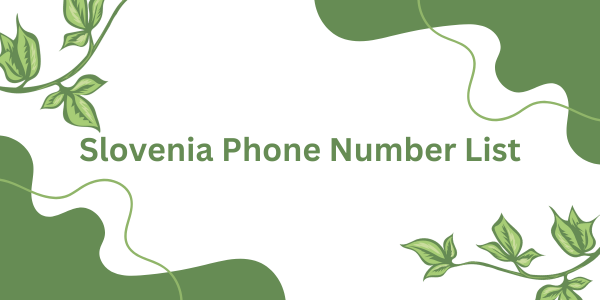|
|
The structure of Slovenia’s parliament is bicameral, consisting of two separate chambers: the National Assembly (Državni zbor) and the National Council (Državni svet). This dual-chamber system is designed to ensure representation for different groups of citizens and sectors, providing checks and balances within the legislative process.
1. National Assembly (Državni zbor)
The National Assembly is the lower house of the Slovenian Slovenia Phone Number List parliament and is the principal legislative body responsible for creating and passing laws. It has 90 members, who are directly elected by the citizens of Slovenia through proportional representation during parliamentary elections. Members serve a term of four years, though early elections can be called under certain circumstances.
The National Assembly's responsibilities include:
Proposing, discussing, and enacting laws.
Approving the national budget.
Overseeing the actions of the government and holding it accountable.
Ratifying international treaties.
Electing key officials, such as the Prime Minister, members of the government, and other constitutional appointments.
2. National Council (Državni svet)
The National Council serves as the upper house and is a more consultative and representative body. Unlike the National Assembly, members of the National Council are not directly elected by the public but are chosen to represent specific groups or sectors. It has 40 members, elected indirectly by interest groups, local governments, and other organizations. Its members represent various professional, economic, and social interests, ensuring that minority perspectives are heard in the legislative process.

The National Council's key roles include:
Reviewing and proposing changes to legislation passed by the National Assembly.
Providing a voice for different social and professional groups in Slovenia.
Acting as a forum for discussion on national and social issues.
Legislative Process
The two chambers work together within Slovenia’s parliamentary system, with the National Assembly holding more substantial legislative power. For a law to pass, it must first be proposed, debated, and approved by the National Assembly. The National Council can review legislation, suggest amendments, or delay the approval of laws but has more limited legislative authority compared to the National Assembly.
Government's Role
The parliament also oversees the executive branch, as the Prime Minister and other government members are accountable to the National Assembly. This ensures a parliamentary system based on a balance of power among the legislative, executive, and judicial branches.
The bicameral structure of Slovenia’s parliament is vital for promoting democratic governance, safeguarding the interests of different sectors, and ensuring fair representation in the legislative process.
|
|